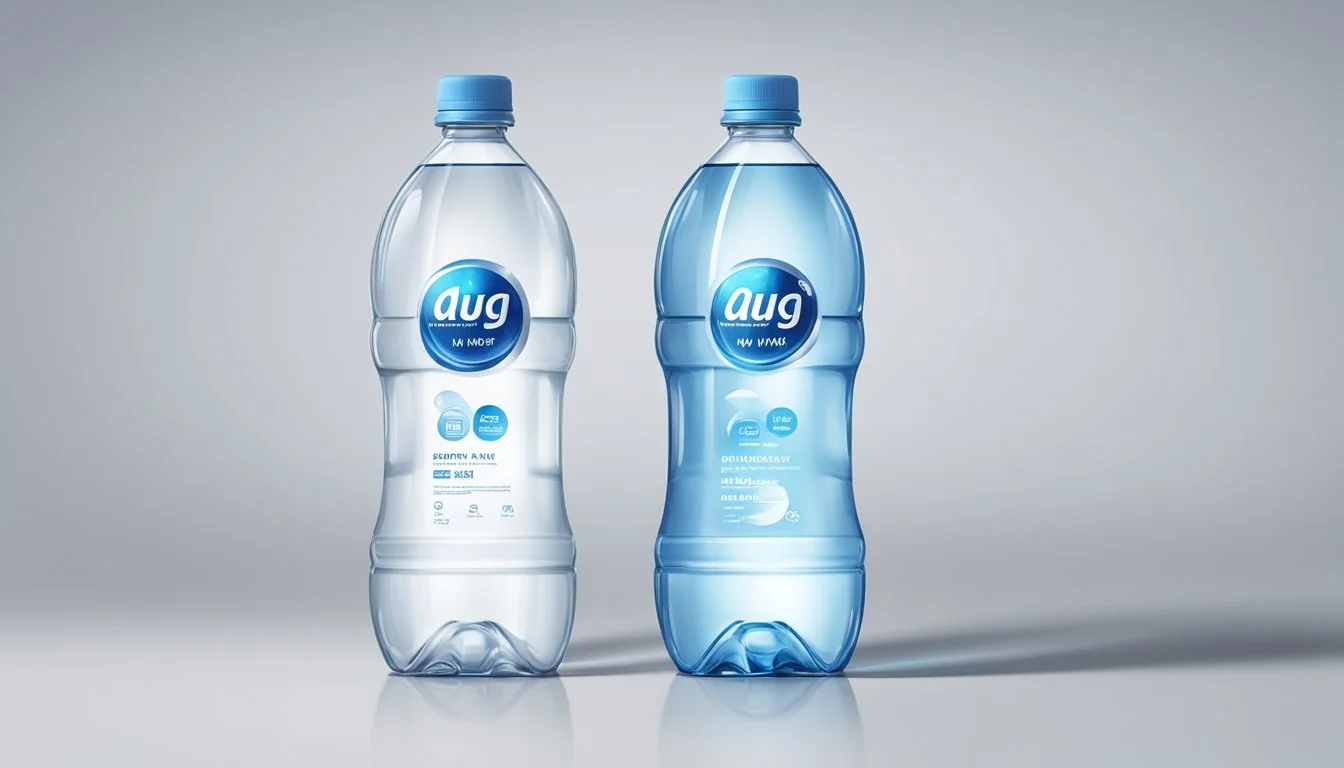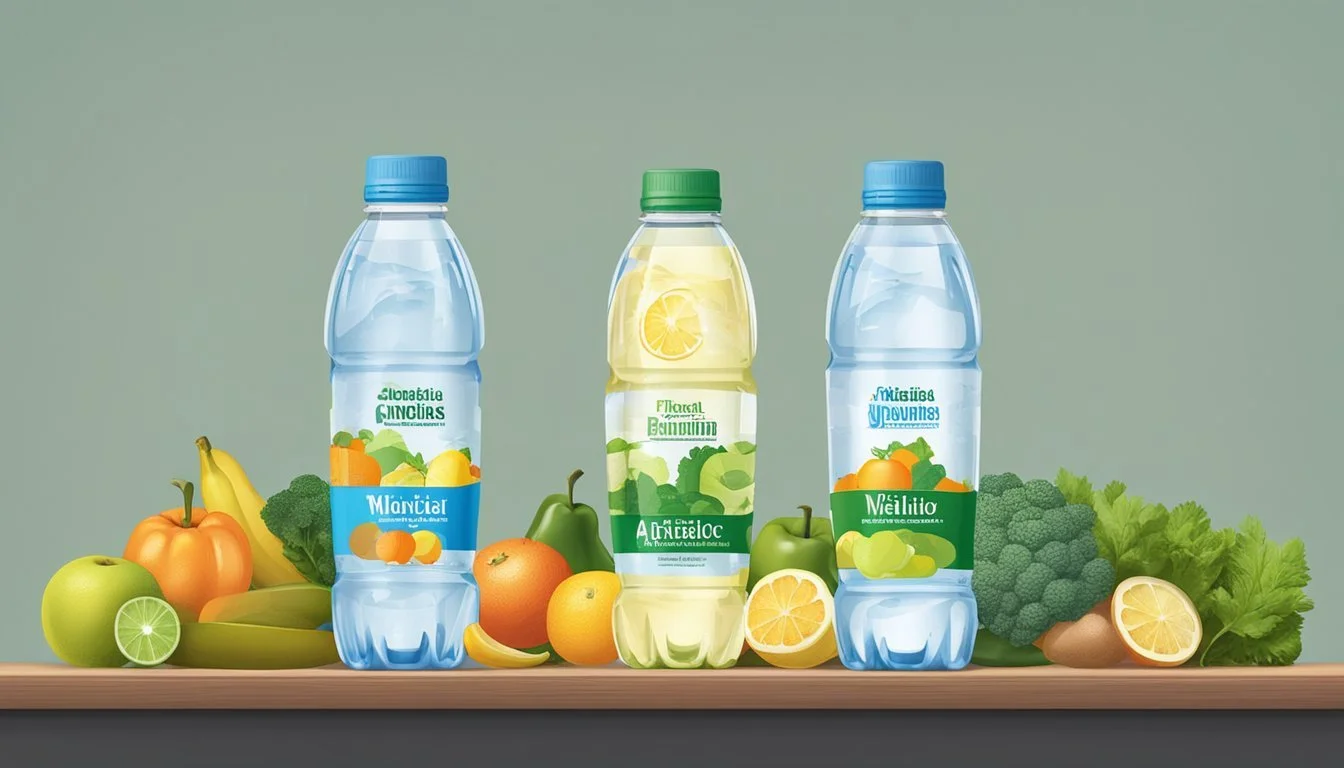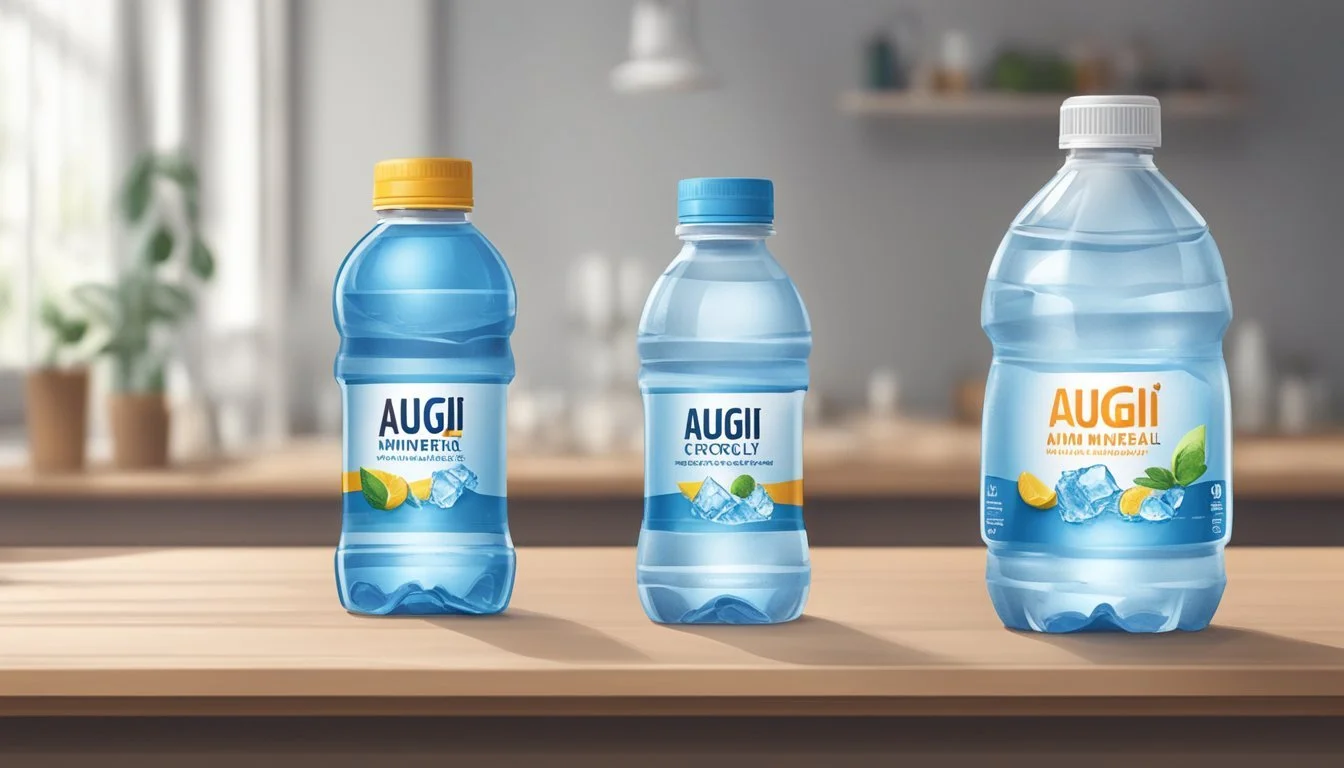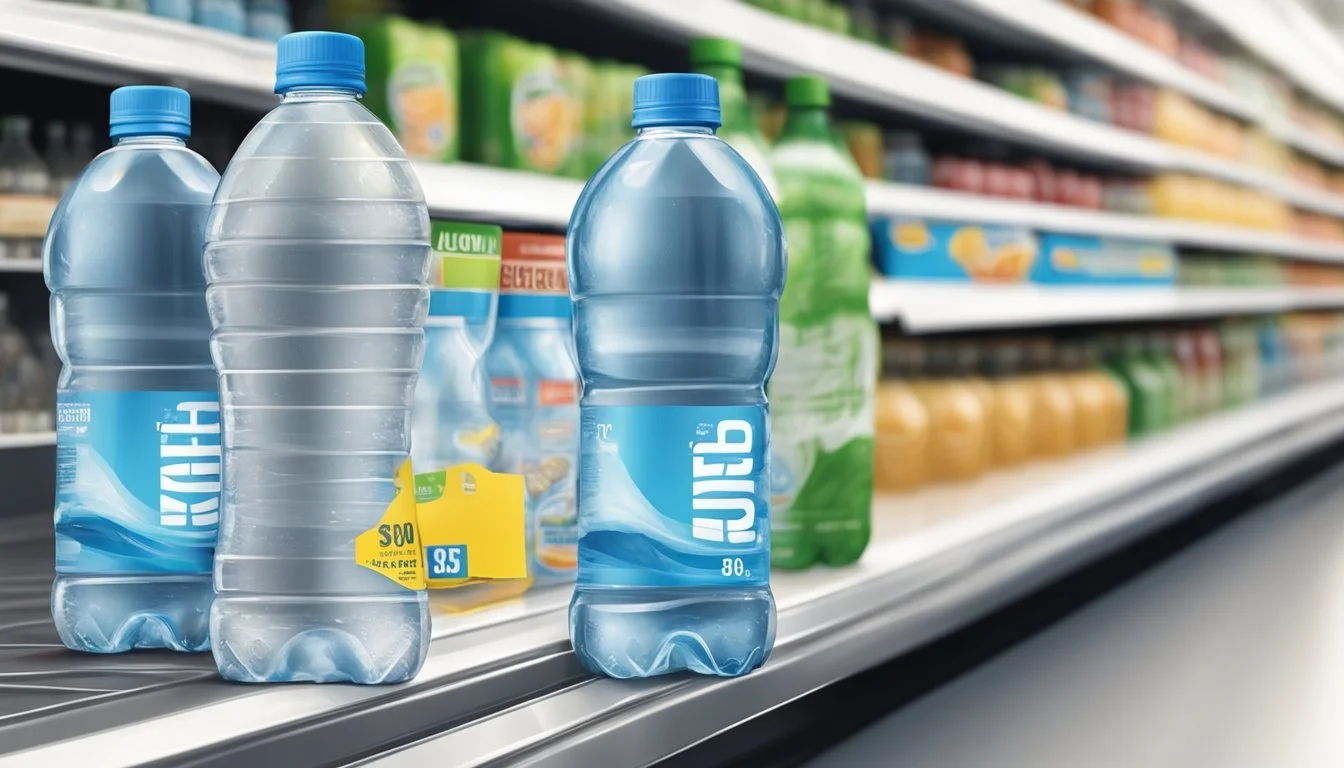Augi vs. Big Win
A Comparative Analysis of Bottled Water Brands
In the crowded landscape of bottled water, two names frequently stand out: Augi and Big Win. Each caters to consumers seeking quality and taste, yet they offer distinct experiences. Quality and consumer satisfaction are paramount when choosing your hydration source.
Augi prides itself on premium quality, drawing from what they claim to be pristine natural sources. The taste is often described as crisp and refreshing, appealing to those with a discerning palate.
Big Win, a product from Rite Aid, also garners attention for its purified water. Utilizing reverse osmosis, it aims to deliver a clean taste, although some note a slightly bitter finish. When directly comparing the two, Augi generally wins on taste and perceived quality, making it a preferred choice for many consumers.
The Battle of the Brands: Augi vs. Big Win
Augi and Big Win are two prominent bottled water brands, each with unique features and offerings that cater to different consumer needs. This section examines their company profiles and product lines to help readers make an informed choice.
Company Profiles
Augi is known for its premium water sources and sustainable practices. The brand emphasizes the purity of its water, sourced from protected natural springs. Augi’s commitment to environmental responsibility is evident through their use of eco-friendly packaging materials.
Big Win, on the other hand, focuses on affordability and accessibility. While maintaining quality standards, Big Win sources its water from various regions, ensuring a consistent supply. The brand aims to provide a budget-friendly option without compromising on taste or safety.
Comparison:
Feature Augi Big Win Source Natural springs Multiple regions Environmental Eco-friendly packaging Standard plastic bottles Price Range Premium Affordable Market Position High-end Budget-conscious
Product Lines
Augi offers a range of products that include natural spring water, mineral-enhanced water, and flavored variants. Their packaging often features recyclable materials, appealing to environmentally conscious consumers. Augi also provides options in various sizes, from single-serve bottles to larger family packs.
Big Win simplifies its product line with a focus on plain bottled water. While not as diversified as Augi, Big Win ensures that their water meets high safety standards. The brand offers multiple packaging options, though predominantly using standard plastic bottles due to cost considerations.
Comparison:
Product Line Augi Big Win Variants Spring water, mineral water, flavored water Plain bottled water Packaging Recyclable materials Standard plastic bottles Size Options Single-serve, family packs Various sizes, primarily for individual consumption
Both Augi and Big Win cater to specific market segments, with Augi leaning towards eco-conscious consumers and Big Win appealing to those seeking budget-friendly choices. This detailed look at their company profiles and product lines provides a clear understanding of what each brand offers.
Understanding Water Quality
Water quality refers to the essential characteristics of bottled water that ensure it is safe, clean, and pleasant to drink. These characteristics include the presence of minerals, absence of contaminants, and adherence to regulatory standards like those set by the FDA.
Defining Water Quality
Water quality encompasses various parameters that affect both safety and taste. Mineral content influences the flavor profile of water and can provide health benefits. For example, waters rich in magnesium or calcium may taste more refreshing.
Heavy metals and contaminants such as lead and arsenic are critical factors; their levels must be strictly monitored to ensure safety. The FDA establishes limits on these substances to protect consumers. Adhering to these regulations is essential for any bottled water brand.
Quality Reports and Certifications
Quality reports are essential for verifying compliance with safety standards. These reports typically detail the water source, mineral content, and any detected contaminants. Brands must make these reports available to the public for transparency.
Certifications by regulatory bodies confirm that the water has been processed under sanitary conditions and meets all FDA regulations. Regular testing and professional audits ensure continuous adherence to these guidelines, providing consumers with confidence in the safety and quality of their drinking water.
Taste Profiles
Understanding the taste profiles of Augi and Big Win involves examining the role of minerals and the science of water tasting. These elements contribute significantly to each brand's distinct flavor.
The Role of Minerals in Flavor
The minerals present in bottled water, such as calcium, magnesium, sodium, and potassium, play crucial roles in determining its taste. Augi, sourced from the Leesburg, Va., municipal water supply, exhibits a slight sulphuric taste, which might be attributed to its specific mineral content.
Big Win, on the other hand, is purified through reverse osmosis. This process typically removes most minerals, resulting in a cleaner but potentially less flavorful taste compared to waters with natural mineral content.
Spring water and natural spring water often have a more varied mineral profile, adding to their complex taste. Alkaline water, with higher pH levels, might also taste different due to the presence of added minerals like electrolytes.
Science of Water Tasting
The method of water tasting often involves a detailed analysis by experts known as water sommeliers. They assess the water's taste through its texture, flavor notes, and aftertaste. For instance, in tasting Augi, the sulphuric hint might stand out to a sommelier as a distinctive aspect.
Big Win's tasting notes suggest a clean, crisp flavor with a slightly bitter finish, typical of reverse osmosis purified water. This contrasts with some spring waters, which often have a slightly sweet or smooth taste due to their natural mineral content.
pH levels also influence taste. Water closer to neutral pH (around 7) is generally more palatable, while variations can introduce different flavor elements.
Through structured tasting sessions, differences between brands like Augi and Big Win become evident, informing consumer preferences.
Nutritional Aspects
Augi and Big Win bottled waters differ in their nutritional profiles, particularly regarding their electrolyte levels and mineral content. These differences can impact hydration, taste, and health benefits.
Electrolytes and Hydration
Electrolytes, such as sodium, calcium, and magnesium, play a crucial role in hydration and maintaining the balance of fluids in the body. Augi water reportedly contains a higher level of natural electrolytes compared to Big Win. This can enhance the hydration process, making it a preferred choice for athletes or those needing rapid rehydration.
Big Win, on the other hand, is purified for a neutral taste, which could mean a lower concentration of naturally occurring electrolytes. Smaller quantities of electrolytes might make it less efficient for intensive hydration but suitable for general daily consumption. The presence of these electrolytes not only aids in hydration but also supports the function of vital organs.
Comparing Mineral Content
The mineral content in bottled water affects its taste and health benefits. Augi water often contains higher concentrations of minerals like calcium and magnesium, which are beneficial for bone health and muscle function. The natural sources of these minerals can provide a refreshing taste that some consumers prefer.
Big Win’s purification process might reduce its mineral content, potentially making it less beneficial for those seeking additional nutritional benefits from their drinking water. However, this also results in a cleaner taste without any aftertaste, appealing to those who prefer or need low-mineral water for dietary reasons. Comparatively, brands such as Nestlé Pure Life provide balanced mineral content, offering an alternative in the bottled water market.
Environmental Perspectives
Environmental considerations in assessing bottled water often involve evaluating the source of the water and the type and recyclability of the packaging used. Both factors contribute significantly to the products' overall environmental impact.
Packaging and Sustainability
Packaging plays a critical role in the environmental footprint of bottled water. Augi and Big Win both utilize PET bottles, but there are notable differences. Augi's bottles are made from 50% post-consumer recycled (PCR) content, which reduces the need for new plastic production. In contrast, Big Win uses traditional PET bottles with no recycled content, leading to a higher dependence on virgin plastic.
The recyclability of these bottles is crucial. PET is widely recyclable, yet the actual recycling rates vary greatly. Consumers should be encouraged to recycle, as this minimizes the environmental impact.
Another aspect is the promotion of reusable bottles. Companies are increasingly offering water in containers designed to be used multiple times, significantly cutting down on single-use plastic waste.
Water Source Protection
The origin of the water significantly impacts its environmental sustainability. Augi sources its water from the Leesburg, Va., municipal supply, which may place a lower strain on natural resources compared to natural spring sources. Municipal water is already treated and distributed for public use, suggesting a potentially lower environmental cost.
On the other hand, Big Win sources its water from protected groundwater and natural springs. Extracting water from these sources can have distinct ecological impacts, including the depletion of the water table and effects on local ecosystems.
Protecting these water sources involves stringent monitoring to ensure sustainable water extraction rates and minimal disruption to the surrounding environment. Companies must also invest in environmental management practices to mitigate the potential negative impacts of water extraction.
Consumer Choices and Pricing
When comparing Augi and Big Win bottled waters, it is important to consider the factors that influence pricing and the aspects consumers should evaluate when making a purchase.
Understanding Pricing Factors
The pricing of bottled water can vary significantly based on several factors. Brand reputation often plays a critical role, with established names like Voss, Fiji Water, and Evian typically commanding higher prices. These brands are known for their premium sources and rigorous quality controls.
Packaging also impacts the cost. Bottled water available in glass bottles, such as Voss, may be more expensive than those in plastic due to higher production and shipping costs.
Source of the water is another pricing determinant. Brands sourcing from natural springs, like Evian, often price their products higher compared to brands that offer purified tap water, such as Aquafina, which tend to be more inexpensive.
Lastly, the price is affected by distribution channels. Bottled water sold in specialty stores or direct deliveries may be pricier compared to those available in grocery stores or convenience stores.
Making an Informed Purchase
Consumers looking to buy bottled water should consider several key aspects to ensure they get the best value for their money. First, evaluate the source and type of water. For those seeking a natural taste and added minerals, brands like Fiji Water and Evian are popular choices.
Checking the price per bottle can help manage the budget effectively, especially when buying in bulk. It's also wise to compare the cost of bottled water to tap water, as the latter is significantly cheaper and often just as safe.
Convenience is a significant factor. Bottled water is easy to carry and available nearly everywhere, making it a practical option for busy individuals.
Lastly, consumers should look at the total cost of ownership. Cheaper brands might be more economical for daily consumption, while premium brands might be better suited for special occasions or for those who prioritize higher quality.
By understanding these factors, consumers can make better informed and cost-effective decisions when choosing between Augi and Big Win bottled waters.
Alternatives to Bottled Water
Finding alternatives to bottled water can help reduce plastic waste and often prove to be more economical. People are increasingly looking at options like tap water, reusable bottles, and emerging water trends to meet their hydration needs.
Tap vs. Bottled: A Comprehensive Look
Tap water is often a convenient and cost-effective alternative to bottled water. It undergoes stringent regulation and testing to ensure safety for consumption. Using a reusable bottle filled with tap water can significantly cut down on plastic waste.
Purified water can be obtained through home filtration systems, enhancing the taste and removing potential contaminants. Comparatively, bottled water may include alkaline water and carbonated water, adding variety but at a higher environmental impact due to plastic bottles.
Emerging Trends in Water Consumption
Several new trends are gaining popularity as alternatives to conventional bottled water. Boxed water is packaged in recyclable cartons, making it an eco-friendlier option.
Alkaline water boasts a higher pH level, which some believe offers health benefits, while carbonated water provides a sparkling alternative without the added sugars found in sodas. Many are also considering flavored or nutrient-enhanced options, providing both taste and hydration benefits.






